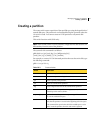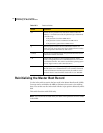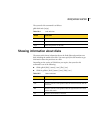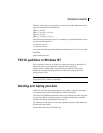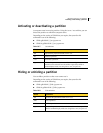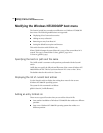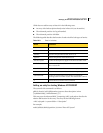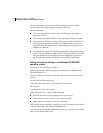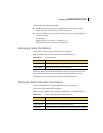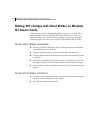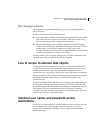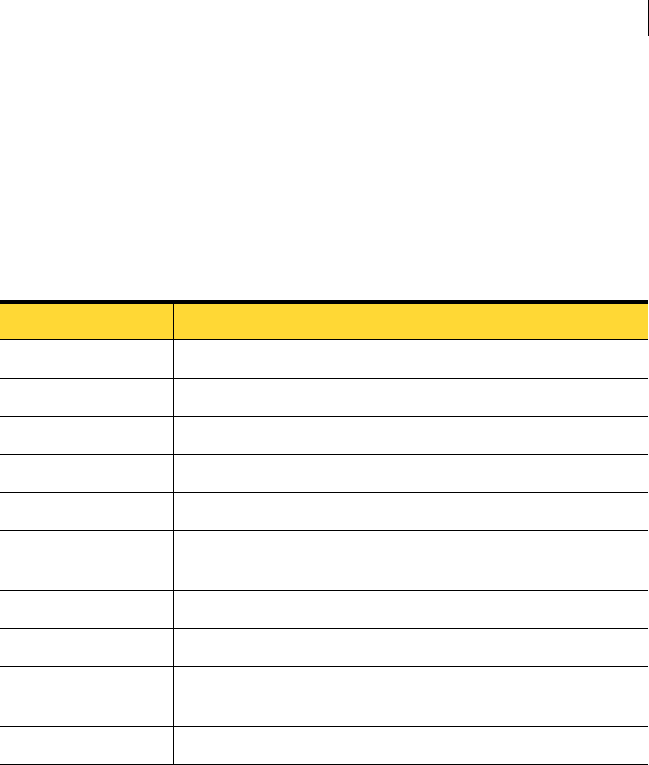
139Managing partitions using GDisk
Modifying the Windows NT/2000/XP boot menu
GDisk does not add an entry to Boot.ini in the following cases:
■ An entry with the description already exists in Boot.ini (case insensitive).
■ The referenced partition is of type Extended.
■ The referenced partition is hidden.
The following table describes the function of each switch for both types of entries.
Adding an entry for starting Windows NT/2000/XP
The syntax for this command is as follows:
gdisk32 /bootini /add /d:disknumber/p:partno /desc:description /winnt
[/sysfolder:folder] [/inifile:filename] [/r]
This entry uses the Advanced RISC Computing (ARC) style path to describe the
relative disk location for the entry. The entry has the following format:
<ARC style path>\<system folder>=“description”
For example:
multi(0)disk(0)rdisk(0)partition(1)\winnt=“Boot NT System”
Table 10-9 Boot.ini switches
Switch Explanation
/bootini Modifies Boot.ini.
/add Creates a new entry in Boot.ini.
/d:diskno Represents the physical fixed disk, from 1 to 8.
/p:partno Indicates the partition from which to boot.
/desc:description Specifies the description to appear in the NT boot loader menu.
/inifile:filename Specifies the full path and file name for Boot.ini. The default
value is C:\boot.ini.
/bsectfile:filename Specifies the boot sector file to create. For example, C:\bsect.dat.
/winnt Adds an entry to start a Windows NT/2000/XP operating system.
/sysfolder:folder Specifies the system folder on the Windows NT/2000/XP
operating system from which to start. The default value is Winnt.
/r Restarts after the execution of the command.



